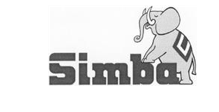At a time when New Year’s resolutions to exercise more fizzle out for lack of motivation, many people realise what the General Court (GC) already knew: sport and entertainment do not necessarily have to go hand in hand. In the BIMBA TOYS case (21 December 2022, T-129/22), the GC confirmed the decision of the Fourth Board of Appeal of the EUIPO and ruled that “gymnastic and sporting articles” were not similar to “games, toys”. According to the GC, one of the main reasons for the dissimilarity between the mentioned goods was that they had a different purpose: “gymnastic and sporting articles […] were essentially intended to train the body through physical exercise, whereas [games and toys] were intended first and foremost to entertain their users” (para. 42).

The decision concerned an opposition based on prior marks SIMBA and , in class 28, and the protection of the company name Simba Toys GmbH & Co. KG in Germany, all used for toys and games.
The opposition was directed against the figurative trademark for “gymnastic and sporting articles” in class 28 (the original wider list covering also toys of course was no longer at issue; in this respect, Simba Toys had already won).
“gymnastic and sporting articles” in class 28 (the original wider list covering also toys of course was no longer at issue; in this respect, Simba Toys had already won).
Without assessing the similarity of the signs, the GC denied a likelihood of confusion purely on the ground that the goods were dissimilar. While agreeing that certain sporting articles such as balls, skipping ropes and hula hoops could also be used for games, and that certain games could also be sporting articles, the GC maintained – in line with earlier rulings to this effect (see also T‑514/11 (BETWIN); T‑657/13 (ALEX); T-524/18 (BILLA)) – that the goods were dissimilar. It considered that their intended purpose was the decisive factor and not the misuse or occasional different use of the goods. Furthermore, the material of the goods such as plastic, rubber or leather was so varied that the goods could not be regarded similar solely because they were made of the same material.
The GC agreed that some well-known manufacturers of sporting articles also sold balls or skipping ropes. However, this small overlap was considered insufficient to establish an identity between the manufacturers of these goods as those articles were for exercise and not just for amusement.
Evidence showing that gymnastic or sporting articles intended for children were offered as a supplement to games by submitting evidence from the International Toy Fair in Nuremberg (Germany) did not convince the GC. It considered that the fair was only for professionals and not the general public, and that the evidence did not show that the goods covered by the signs at issue were commonly presented at toy trade fairs and in catalogues.
With regard to the German company name, the GC came to the same conclusion. Under the applicable German law, “similarity of goods”, in the context of trade names, is replaced with “proximity of economic sectors”. In this context, the GC by and large referred to its previous arguments according to which the goods were different. Where skipping ropes and balls were made for children, they had a different intended purpose (namely, solely to ‘amuse’) than in the event of exercise equipment. So while Simba Toys could refer to skipping ropes and balls, this did not mean that there was a proximity of sectors.
What mattered was that, according to the GC, consumers would not expect a manufacturer of toys and games to also product sporting equipment, and would therefore see no economic link.
What the GC did not address was whether consumers, confronted with sporting equipment under the brand “BIMBA TOYS”, would really not think that a toy maker might be involved? While it is correct that similarity of goods or proximity of sectors must be assessed in the abstract, in the specific case, the result appears counter-intuitive, and one could certainly have taken the contrary position. However, as mentioned, the alleged dissimilarity of sporting equipment and toys / games appears to be set in stone in EU case law.
_____________________________
To make sure you do not miss out on regular updates from the Kluwer Trademark Blog, please subscribe here.



